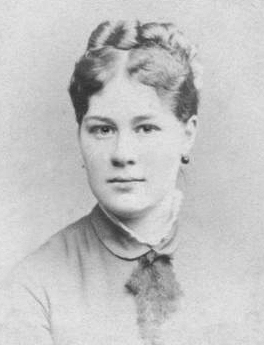
Eliza Cecilia Beaux was an American artist and the first woman to teach art at the Pennsylvania Academy of the Fine Arts. Known for her elegant and sensitive portraits of friends, relatives, and Gilded Age patrons, Beaux painted many famous subjects including First Lady Edith Roosevelt, Admiral Sir David Beatty and Georges Clemenceau.

Thomas Cowperthwait Eakins was an American realist painter, photographer, sculptor, and fine arts educator. He is widely acknowledged to be one of the most important American artists.

Charles Allan Grafly, Jr. was an American sculptor, and teacher. Instructor of Sculpture at the Pennsylvania Academy of the Fine Arts for 37 years, his students included Paul Manship, Albin Polasek, and Walker Hancock.

The Pennsylvania Academy of the Fine Arts (PAFA) is a museum and private art school in Philadelphia, Pennsylvania. It was founded in 1805 and is the first and oldest art museum and art school in the United States.
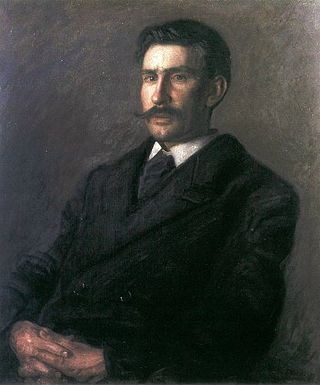
Edward Willis Redfield was an American Impressionist landscape painter and member of the art colony at New Hope, Pennsylvania. He is best known today for his impressionist scenes of the New Hope area, often depicting the snow-covered countryside. He also spent his summers on Boothbay Harbor, Maine, where he interpreted the local coastline. He frequently painted Maine's Monhegan Island.
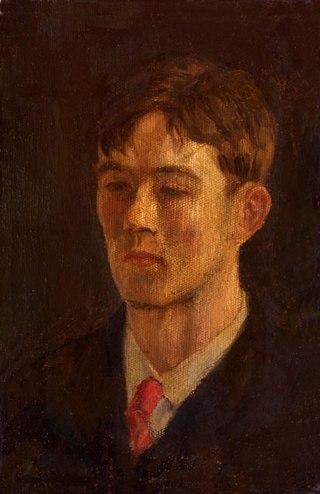
Walter Emerson Baum was an American visual artist and educator, active in the Bucks and Lehigh County areas of Pennsylvania. In addition to being a prolific painter, Baum was also responsible for the founding of the Baum School of Art, and the Allentown Art Museum.

Thomas Pollock Anshutz was an American painter and teacher. Known for his portraiture and genre scenes, Anshutz was a co-founder of The Darby School. One of Thomas Eakins's most prominent students, he succeeded Eakins as director of drawing and painting classes at the Pennsylvania Academy of Fine Arts.
Bo Bartlett is an American realist painter, working in Columbus, Georgia and Wheaton Island, Maine.
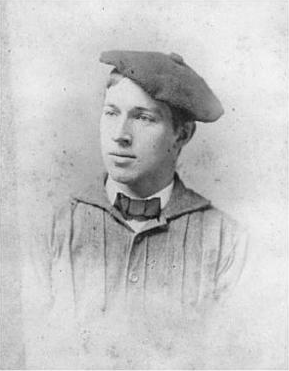
George Francis Stephens (1859–1935) was an American sculptor, political activist and co-founder of a utopian single-tax community in Arden, Delaware.

The Agnew Clinic is an 1889 oil painting by American artist Thomas Eakins. It was commissioned to honor anatomist and surgeon David Hayes Agnew, on his retirement from teaching at the University of Pennsylvania.
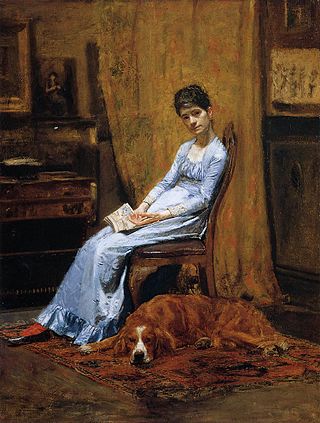
Susan Hannah Eakins was an American painter and photographer. Her works were first shown at the Pennsylvania Academy of the Fine Arts, where she was a student. She won the Mary Smith Prize there in 1879 and the Charles Toppan prize in 1882.

Edward Hornor Coates was an American businessman, financier, and patron of the arts and sciences in Philadelphia. He served as a director of the Mechanics National Bank in 1873, was chairman of the Committee on Instruction at the Pennsylvania Academy of the Fine Arts from 1883 to 1890, and held the position of Academy president from 1890 to 1906.
Art Students' League of Philadelphia was a short-lived, co-operative art school formed in reaction to Thomas Eakins's February 1886 forced-resignation from the Pennsylvania Academy of the Fine Arts. Eakins taught without pay at ASL from 1886 until the school's dissolution in early 1893.

Frank Benton Ashley Linton was an American portrait-painter and teacher. He was a student of Thomas Eakins, studied the École des Beaux-Arts, and won a bronze medal at the 1927 Salon Nationale in Paris. Likely a closeted gay man, he lived with pianist Samuel Meyers for more than thirty years.

William Sartain was an American artist, known for the moody tonalism of his paintings, and interests and influences that spanned Orientalism and the Barbizon plein air approach to art. Friend to Thomas Eakins, son of artist John Sartain and brother to artist Emily Sartain, Sartain was one of the founders of the Society of American Artists and later became president of the New York Art Club.

The Ironworker's Noontime is an 1880 painting by the American painter Thomas Anshutz.
David Frost Sellin was an American art historian, curator, educator, and author. He taught at a number of universities, worked on the staffs of several museums, and served as curator of the U.S. Capitol, 1976-1980.

Charles Bregler was an American portrait painter and sculptor, and a student of artist Thomas Eakins. Bregler wrote about Eakins's teaching methods, and amassed a large collection of his minor works, memorabilia and papers. Following Bregler's death, his widow safeguarded the Eakins collection for decades before selling it to the Pennsylvania Academy of the Fine Arts.

Hugh Henry Breckenridge, was an American painter and art instructor, who championed the artistic movements from impressionism to modernism. Breckenridge taught for more than forty years at the Pennsylvania Academy of Fine Arts, becoming the school's Dean of Instruction in 1934. He also taught from 1899 to 1918 at the Darby School of Art, which he co-founded with Thomas Anshutz (1851-1912), and from 1920 to 1937 at his own Breckenridge School of Art in Gloucester, Massachusetts.

Frederick William Weber was a chemist, artist, columnist and businessman from Philadelphia, Pennsylvania. An expert on the chemistry and physics of paint materials, Weber served as treasurer, technical director and eventually president of F. Weber & Company, Inc., an artists’ supplies manufacturer founded in 1853. Weber developed new techniques for the manufacture of inks and pigments, and played a major role in the introduction of synthetic resins to the paint-making process.



















